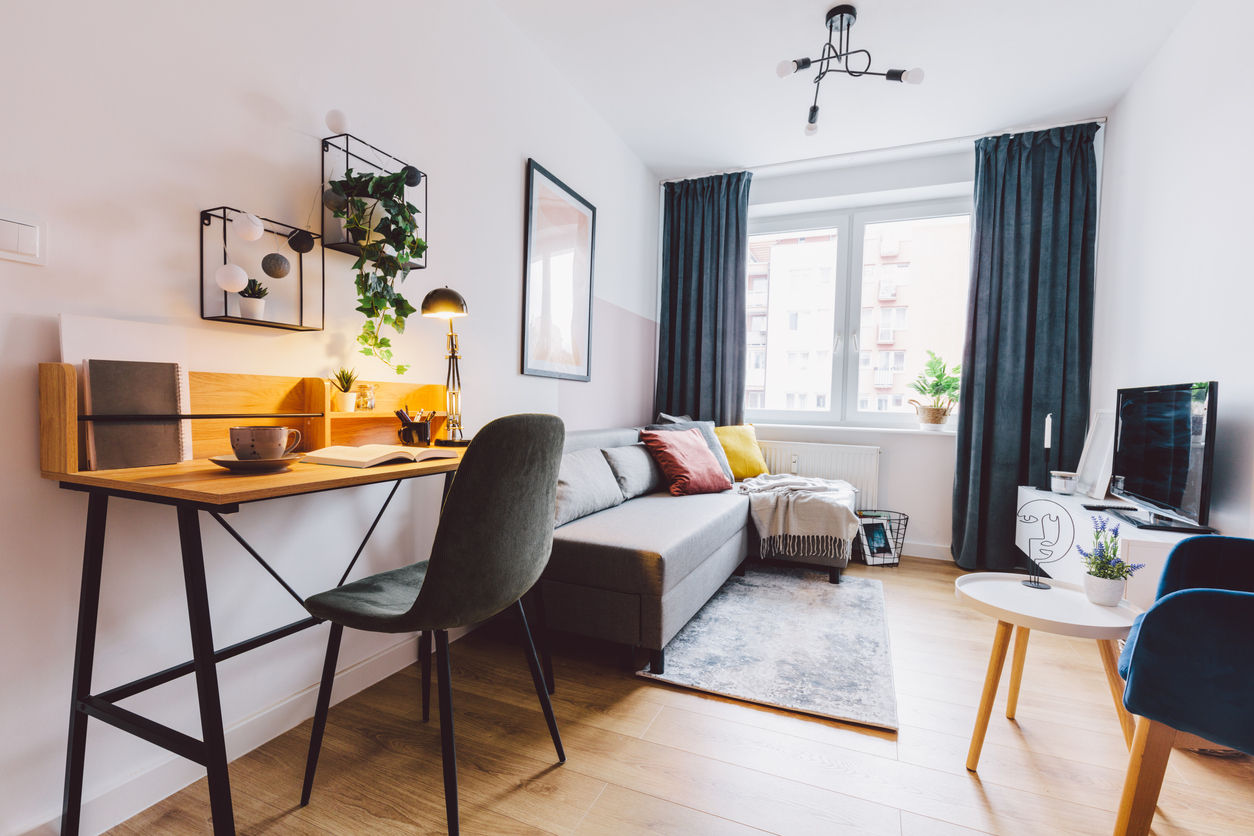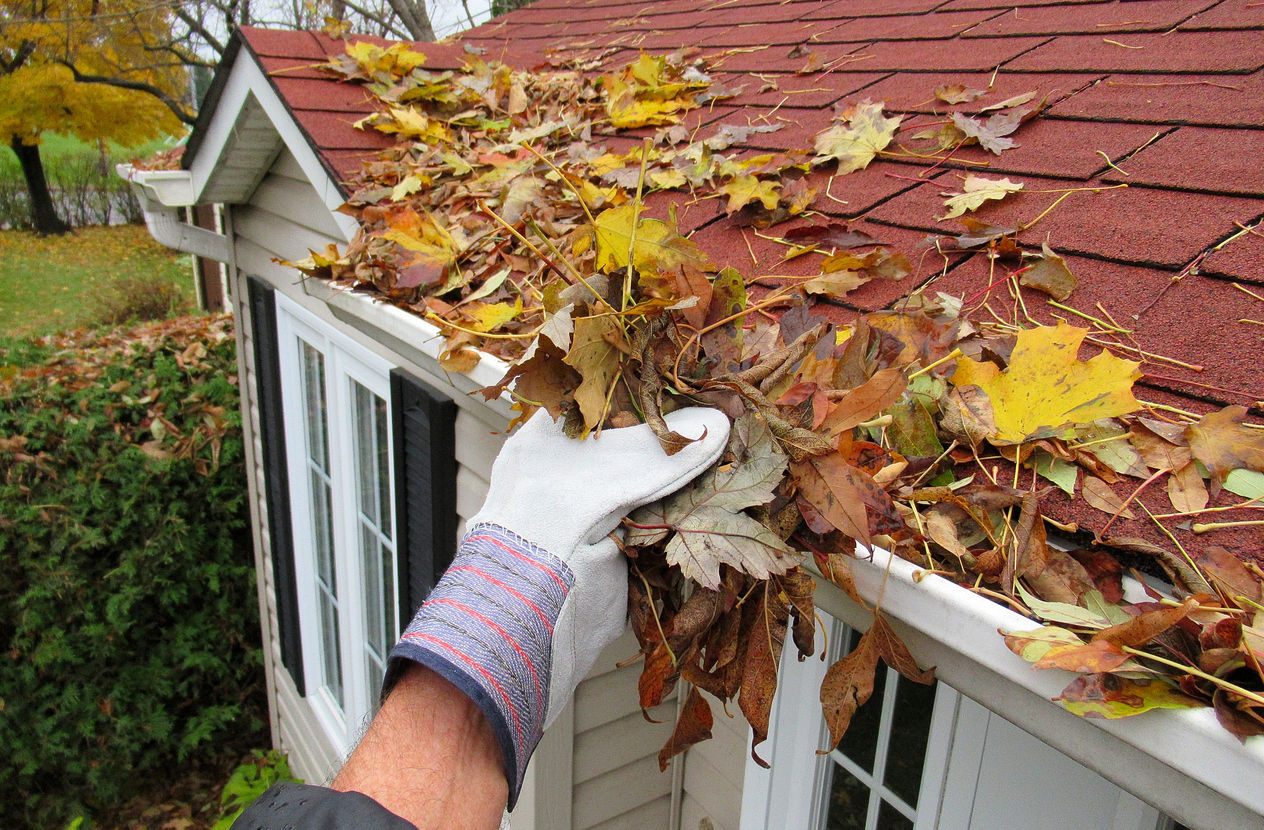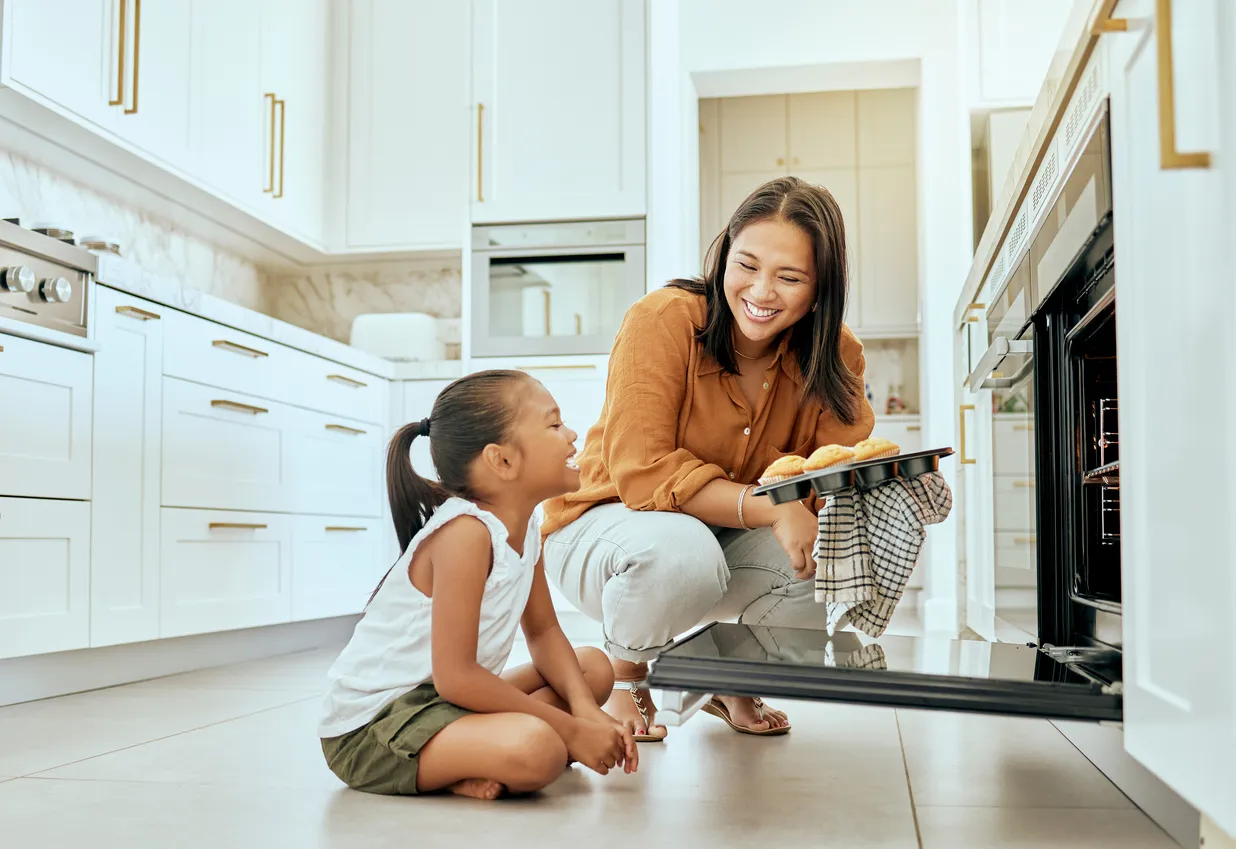How to Stage a House for Sale While Living In It
Staging is a powerful way to attract buyers and help them understand your home. According to the National Association of Realtors (NAR), 81% of buyers’ agents said staging made it easier for their clients to visualize what living in the home would be like. When buyers walk into a staged home, they can start to picture where their furniture will go, making it easier to form emotional attachments to potential properties.
Staging can also make a space look bigger and potentially increase perceived value for buyers. The goal of staging is to help your home sell faster and for an ideal amount.
However, living in a home that is being staged presents unique challenges. The staging experience might not be comfortable, but it can be made easier with the right planning.
Follow these steps to learn how to stage a house for sale while living in it. Small changes can help you overcome any frustrations caused by the staging layout while allowing you to keep your home show-ready at any given moment.
How to Stage a House for Sale While Living In It
Almost every room in your living space will likely be affected by the home staging process. However, you can take a methodical approach to ensure your space is ready for potential buyers without feeling overwhelmed by this project. Here’s how to stage your house.
Declutter and Depersonalize
The best way to survive the home staging process is to identify what you need to live day-to-day and to keep those items easily accessible. Other items should be packed up and placed in storage or donated. You may decide to rent a storage unit during this time to physically remove items from your home instead of trying to organize existing closets and sheds.
Decluttering before you list can also make moving easier in the long run because half of your items will already be packed up. Start the home staging process with these three steps.
Remove Personal Items
The adage about personal items distracting potential buyers rings true. Family photos, awards, mementos from your wedding, and other personal items can distract buyers. Instead of picturing themselves in the home, they can feel like they are disrupting yours.
Your first step is to remove all the family photos and other special items and place them in storage. While taking down these important memories may be difficult, it is only for a few months until you move into your new home.
Declutter Rooms
The next step is to minimize items on countertops, shelves, and tables to make the space feel more open and organized. This is another reason to potentially invest in a storage space. While decluttering starts with small items on countertops, it also extends to unnecessary furniture that makes rooms feel full. Once you declutter each room, you might not know where to put your non-essential items.
If you aren’t sure what needs to be removed in the home staging process, ask your real estate agent. They will let you know which pieces of existing furniture can stay and which items should be cleared out.
This step can be difficult if it means parting with a favorite reading chair or countertop kitchen appliance. However, the more you move out before you list your house for sale, the less you will have to pack up once you are under contract.
Organize Closets and Storage Spaces
Buyers will often look inside closets to evaluate how much storage they will have. More empty storage space will make prospective buyers think there is enough room in the house. Conversely, if each closet is packed with items, buyers might worry that there isn’t enough room for their items.
This is another opportunity to pack up as many items as possible before you start the moving process. If you are selling in the summer, box up your winter clothes, sweaters, and scarves. If you are selling in the winter, pack up your sundresses and swimsuits. Holiday decorations can also get packed away, along with formalwear you only need for the occasional wedding.
You also don’t have to complete this process all at once. Many homeowners start packing items weeks before they list the property for sale. You can set aside a weekend for cleaning out your closets and donating gently used clothes and then spend the next weekend working on landscaping or making repairs.
Deep Clean the Entire Home
Cleaning is also a big part of the home staging process. A clean home is more desirable to potential buyers and clean spaces seem bigger.
You will either want to deep clean your house yourself before listing or hire cleaners to take care of your space so it shines ahead of your showings. Here are a few ways to incorporate cleaning into a well-staged home.
Pay Attention to Areas that Aren’t Cleaned Regularly.
Hiring professional cleaners can help you identify areas that need deep cleaning because they aren’t addressed daily. For example, dust can build up on your baseboards, fan blades, and air vents. Grime can form in between your tiles. You want every inch of your house to shine.
Control Odors
A clean home filled with fresh air is one of the best smells for buyers. Focus on natural scents that provide soft and subtle fragrances. Hand soap and fresh flowers offer light options to choose from. Most importantly, avoid strong air fresheners.
Even a few candles can create overwhelming smells that cause headaches and annoy buyers. Plus, those buyers might wonder if you are trying to hide something – like mold and mildew odors – with the scented sprays.
It is better to not have any odors than to try to spread nice scents through your home. You never know what allergies or sensitivities your buyers have. Don’t distract buyers with smells and instead let them focus on the layout and assets of your home.
Maintain Cleanliness Daily
Establish a routine to keep the home show-ready with minimal effort. For example, this could involve doing the dishes after every meal, wiping down the countertops, and sweeping the floors. Each of these chores only takes a few minutes but can save a considerable amount of time when you need to start preparing for a home tour.
Optimize Furniture Placement
When you stage a house, a considerable amount of time will go into furniture placement. Your agent wants to create a natural flow through your space that makes sense to potential buyers. They might be able to accomplish this with your current chairs, couches, and tables, or they could suggest renting pieces.
You can rent furniture through a stager and they will pick it up once you are ready to move. Here’s how to handle your items when staging a house.
Rearrange Furniture
Your real estate agent will work to create an open and welcoming layout by removing bulky or unnecessary pieces. These pieces can either be donated or placed in storage until you are ready to move.
During this time, they will also make unconventional rooms seem conventional. For example, if you turned your dining room into a home office with a meeting space for clients, your agent may recommend turning it back into a dining area. Home gyms, game rooms, and other hobby spaces might be staged to look like bedrooms again.
Use Neutral Decor
Your agent should tell you whether your personal belongings can be used when staging a house. Some people already use neutral items and incorporate soft colors into their designs. However, a seller who loves bold items and unique pieces might need to store these items away for their future home.
Not only does your Realtor want to choose pieces that appeal to a wide range of buyers, but they also want to pick items that aren’t distracting. A simple dining room set can help a buyer picture evening meals in the space without making them wonder where the table and chairs came from.
Maximize Natural Light
Open curtains and blinds to let in as much natural light as possible. Not only will this brighten your space, but it will also make rooms seem bigger.
Embracing your home’s natural light can require a delicate balance between keeping your house show-ready and making it comfortable to live in. You could end up heating your house in the hot months as the sun shines through.
Consider either keeping curtains in place that you can open ahead of a showing or investing in ones that are easy to remove and fold away – without leaving bare curtain rods. Also, remember to cool your house ahead of a showing so buyers can be comfortable and confident in your home’s HVAC system.
Stage Key Rooms First
If staging your house seems like a large project or you aren’t sure that you can stage an entire home, start with a few key rooms. This can help you maximize the value of your efforts because you are focusing on areas that buyers care about most.
Focus on the Living Room and Primary Bedroom
Buyers often focus on the living room, kitchen, and primary bedroom when they start their search. However, the kitchen has limited staging opportunities because the cabinets and appliances are set in place.
After you declutter the kitchen, focus your efforts on the living room and primary bedroom. If you have more time and energy, you can move on to the dining area, home office, outdoor living space, and other bedrooms.
Ensure Bathrooms Are Spotless
Don’t underestimate the detrimental effects of a dirty bathroom. Every bathroom should be clean and inviting for buyers. Pay extra attention to the primary bathroom and make it feel like a spa. Buyers want to picture themselves relaxing with a hot shower after a long day. The bathroom needs to be a sanctuary away from the world.
Don’t Forget the Entryway
Create a welcoming first impression by staging the front entrance. This could range from practical improvements like fixing broken light fixtures to aesthetic ones. You can add a few potted plants around the entrance or a festive wreath for upcoming holidays. Let buyers imagine themselves walking up to this home throughout the year.
Manage Day-to-Day Living
The final part of living in a staged home is balancing day-to-day living with keeping your house show-ready. This is harder than you think. You may need to pick up new habits like making your bed each day and wiping down your bathroom sink after you brush your teeth. Follow these tips to make home prep easier.
Use Baskets or Storage Bins
Storage bins can help you immensely ahead of a showing. You can keep all of the items you usually have on your counters in one place, making it easy to restore them once each potential buyer leaves. Without these baskets, you could end up on a scavenger hunt to figure out which drawer or closet has your hand soap and towels.
These baskets can also streamline the decluttering process. It’s much faster to toss all of your items into one bin to hide away instead of trying to find a place for each of your items.
Plan Meals Strategically
Meal preparation is also part of staging. Use easy-to-clean cookware that is dishwasher safe so you can easily put away any dirty dishes. Avoid meals with lingering odors that could be hard to air out ahead of a showing.
You also might have less cookware during this time because of your decluttering efforts. Search for one-pot meals and other easy recipes that still taste good. Simple recipes will help you keep your kitchen clean.
Create a Checklist
Keep a quick checklist of tasks to complete before a showing. These chores can range from turning on the lights to making your beds and wiping down your counters. This will help you clean up in a hurry if something delays your preparation process. While many of these tasks will come naturally over time, it’s easy to forget something small (like cleaning the cat’s litterbox) that can make your house seem messier than you want it to.
Common Home Staging Challenges When Living in Your Space
Home staging is considerably easier when you no longer live in the space. However, it’s not always possible to market a staged home while you live somewhere else. Here are a few best practices to follow if you need to stay on your property during the showing process.
- Maintain a clean space: Keeping the home show-ready can be challenging with everyday activities. Create a checklist of items to keep clean to prevent grime from building up. Wiping down kitchen and bathroom countertops daily will remove crumbs, makeup, and dirt from your space.
- Find places to store personal items: For example, keep a basket for toiletries tucked into a closet when the house needs to be show-ready. You can pull the basket out after, making unpacking easier. This will be less stressful than tucking items away and then trying to remember where you put them later on.
- Coordinate showings: balance showings with your daily routine and family schedules. Request at least 24 hours’ notice so you can prepare your home and highlight any parts of the day that won’t work for a showing. For example, if your family eats dinner around 6 pm each night, ask your agent to schedule all showings before 5 pm.
- Have a plan for your pets and children: Know where you can take your family each time you have a showing, like a nearby park. If your pets will stay inside the home, make sure your real estate agent knows how to prevent them from getting out or biting potential buyers.
After the second or third showing, you should get into a groove with preparing your house and family for buyer visits. This will become easier as the sale process goes on.
Your Real Estate Agent Can Help With the Staging Process
It’s always a good idea to stage your house when listing it. Even small steps to declutter your home and keep it clean can have a big impact on potential buyers. Plus, you can move existing furniture and other non-essential items to where you will live ahead of time, even if your belongings simply wait in storage for you to arrive. A well-staged home can appeal to buyers and help you sell your house, even in tricky markets.
If you aren’t sure where to start, talk to your Realtor. They can recommend a professional stager to work with or handle the interior design process themselves. Turn to the experts who do this all the time instead of trying to be an expert on the first try. From adding fresh flowers to placing bulky furniture at an angle, an expert stager can make a home show-worthy.
To find a real estate agent in your area, turn to FastExpert. You can find agents who specialize in marketing properties in your area. You can ask them about staging and get their recommendations. Let their professional services and contacts help you. Try FastExpert today and take the first steps to stage and sell your home.





